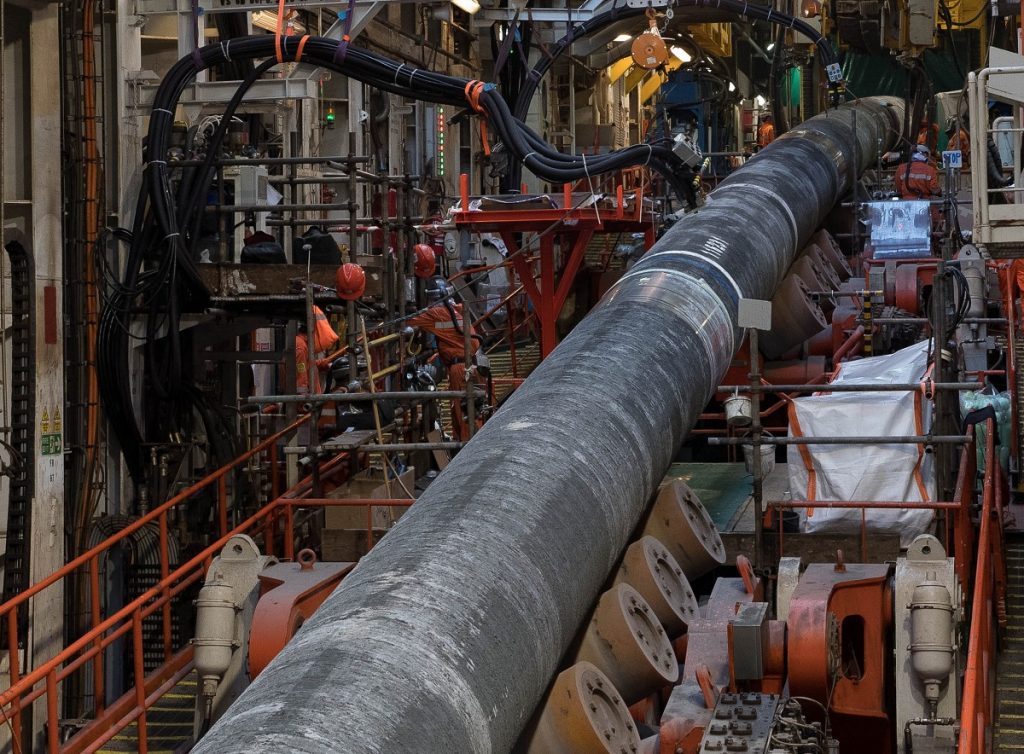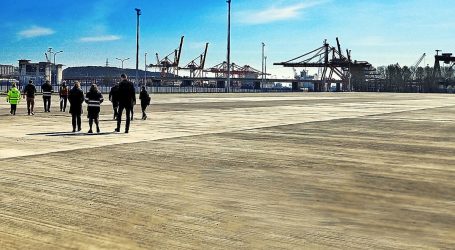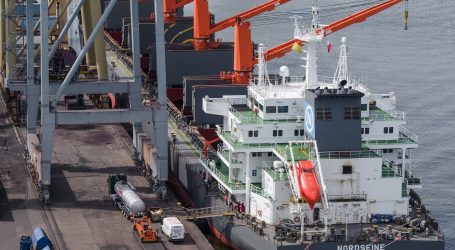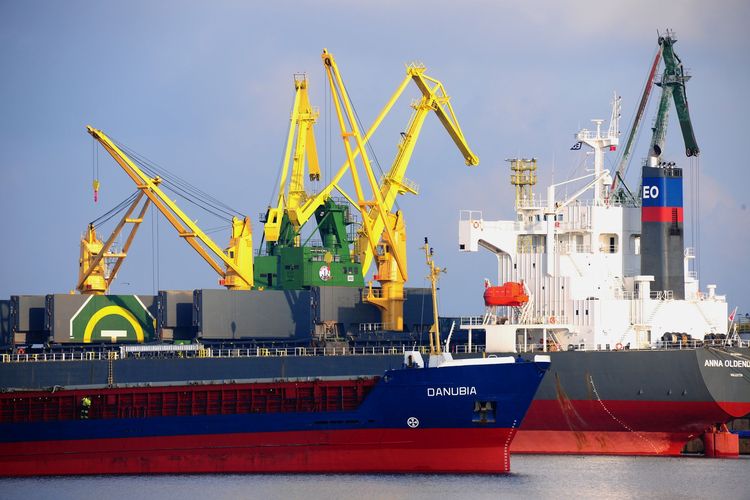Baltic Pipe system: from the North Sea to the Yamal pipeline
Baltic Pipe is an entire gas pipeline system of about 900 km, starting in the North Sea. It runs through Denmark, the Baltic Sea and its final part is an onshore branch on Polish territory. On 1 October 2022, gas transmission towards Poland is to start.
The Baltic Pipe system begins in the North Sea with a so-called spur – a connection to the Europipe II gas pipeline running from Norway to Western Europe. At the point of the Baltic Pipe spur, a PLEM (Pipeline End Manifold), a 215-tonne structure the size of a detached house, was installed on the seabed. From there, the pipeline follows a 105 km route towards the west coast of Denmark. It enters the shore under Houstrup beach, then the pipe runs to the Nybro gas terminal, which had to be specially extended.
After crossing the Jutland peninsula, the gas pipeline crosses the Little Belt Strait and the island of Funen (Fyn) on the bottom. Before the Great Belt Strait, Baltic Pipe is connected to the Danish transmission system, from which it branches off on the next island of Zealand (Zeeland).
The pipeline leaves the Danish mainland at Faxe Bay, having previously passed through the purpose-built Everdrup compressor station. Up to this point, Danish operator Energinet was responsible for the construction, although Poland’s Gaz-System participated financially in the construction of the compressor station. Gaz-System was also responsible for the construction of the pipeline’s exit from land to the open sea. To do this, it was necessary to drill under a coastal cliff using a miniature TBM. A similar method was used for the exit to the Polish coast.
From Faxe Bay, the pipeline follows a 275 km route through Danish territorial waters, the Danish and Swedish economic zones, and south of Bornholm it enters the Polish economic zone, Polish territorial waters and reaches the shore near Pogorzelica in Zachodniopomorskie. Along the way, it crosses the Nord Stream 1 and 2 pipelines, among others. Already within Poland, it connects to the Polish system at the Goleniów compressor station via the so-called barrier complex in Niechorze and the Płoty junction. This part is owned and operated by Gaz-System.
In order to efficiently distribute gas in the Polish system, it was necessary to expand the gas transmission pipeline network and the Goleniów, Gustorzyn and Odolanów compressor stations already in Poland. Formally, the onshore part of the Baltic Pipe is a gas pipeline from Goleniów to Lwówek at the junction with the Yamal pipeline.
By September 2022. Gaz-System had completed all the necessary investments – the construction of new gas pipelines, the construction of the Gustorzyn compressor station and the expansion of the Goleniów and Odolanów compressor stations. The operator also obtained the necessary permits, including occupancy permits.
In order to lay the Baltic Pipe, it was necessary to divide the so-called grey zone between Poland and Denmark, i.e. the 3,600 sq km of sea between the Polish coast and Bornholm, an area in which the economic zones of Poland and Denmark had never before been demarcated. Negotiations and a special intergovernmental agreement were needed to divide this area, which mostly fell to the Danes.
On 1 October, the entire system, ultimately capable of transporting 10 bcm of gas to Poland, will start with limited capacity due to delays at the Danish construction site. In the summer of 2021, work was suspended for several months due to a challenge to the environmental permit in Denmark. To finish the system, the Danes still have a 40 km section on eastern Jutland and 38 km on the other side of the Strait of Little Belt – to the island of Funen.
According to the latest information from the Danish operator, full capacity will be reached at the end of November 2022, one month earlier than previously planned.
source: PortalMorski.pl




